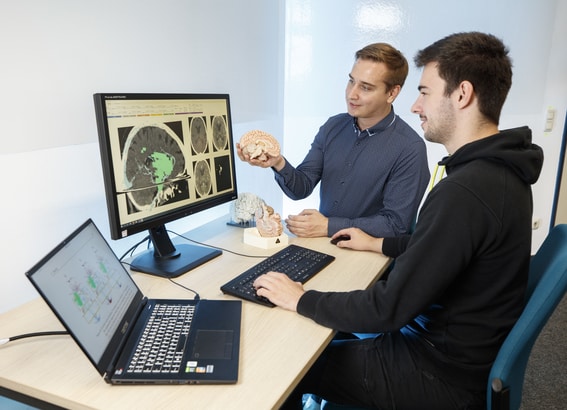PHYSICS
TU Kaiserslautern students present new technique to identify, predict stroke lesions
Strokes are the cause of various disabilities, as they damage the brain such that some areas do not function properly anymore. Those areas are called lesions. Directly identifying or predicting lesions in clinical daily routine is still not possible with today’s imaging tools, creating the need for new software solutions. Scientists are working on such software that could greatly improve therapy preparation, improving the patient’s condition faster. It uses neural network technology, learning from CT data processed by clinicians. The resulting prediction of strokes lesions yields a system helping to spot current damage and to forecast the healing process. The Technische Universität Kaiserslautern, Germany team will be presenting their project at the medical technology show Medica held from November 15 to 18 in Düsseldorf, Germany at the research stand of Rhineland-Palatinate (stand E80, hall 3). 
Strokes cause the closure of vessels leading to a lack of blood supply in the brain. Therefore, some areas are not provided sufficiently with oxygen which causes damage. Those areas, called lesions, are not fully functional anymore and require treatment. Currently, lesions are still hard to locate by only using CT imaging. “Lesions might evolve over time by growing and shrinking,” commented Robin Maack, a doctoral student in the Computer Graphics and Human-Computer Interaction group of Professor Dr. Hans Hagen at Technische Universität Kaiserslautern. “The final shape of the lesion is of great importance for the treatment and rehabilitation of a patient.” Together with Dr. Christina Gillmann from Leipzig University, Maack is working on a new method to quickly identify lesions, including the prediction of their future shape.
To achieve their goal, they use a neural network. “This is a technique of Artificial Intelligence using data to learn about lesion properties in CT images,” explains Maack. “Those special algorithms implement the clinicians’ experience, drawing the lesion shapes into existing images and thus feeding the network with information.” With this procedure, Maack and Gillmann can analyze new CT images without the need for direct assistance by a clinician.
This technique is a valuable addition to current stroke treatment to speed up treatment plan creation. The team will be presenting their work at the trade show.
